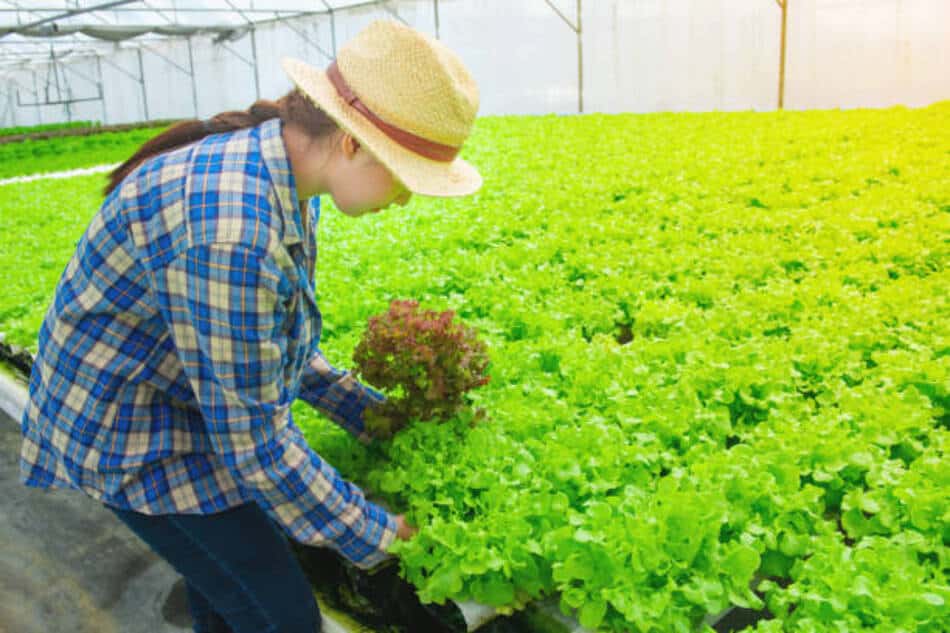Do you that there are different types of farming? And that microgreen farming is a thing too! Yes! But have you ever wondered what is microgreen farming and how very necessary it is? In case you have but couldn’t find a satisfactory answer, you no longer have to search elsewhere. In this article, I answer what is microgreen farming, why should you practice it (if you can), and how it’s beneficial for these tiny plants.
What Is Microgreen Farming?
Microgreens are a type of vegetable that is harvested when the plant is young, typically just after the first set of true leaves have emerged. These greens are packed with flavor and nutrients, making them a popular addition to salads, sandwiches, and other dishes.
Microgreen farming is a relatively new industry, but it is growing rapidly as more people learn about the benefits of these super-healthy greens. While microgreens can be grown indoors or outdoors, most farmers choose to grow them in greenhouses or other controlled environments to ensure a consistent supply of fresh greens year-round. In terms of equipment, microgreen farms can be as simple or complex as the farmer chooses.

Some farmers use basic hydroponic systems, while others utilize sophisticated computer-controlled irrigation and climate control systems. No matter what type of setup a farmer chooses, the goal is always to produce the highest quality microgreens possible.
Why Practice Microgreen Farming?
While microgreens are often thought of as a gourmet ingredient, they actually have a number of health benefits that make them well worth adding to your diet. These greens are packed with vitamins, minerals, and antioxidants. They boost immunity, improve digestion, and even help protect against certain chronic diseases.
In addition to their nutritional value, microgreens are also incredibly versatile in the kitchen. They can be used as a garnish, added to salads or sandwiches, or simply eaten on their own as a healthy snack. If you’re looking for a way to add more nutritious greens to your diet, microgreens are a great option.
How Microgreen Farming Is Beneficial
Microgreen farming has a number of benefits, both for the farmer and for the environment. One of the biggest benefits of microgreen farming is that it requires very little water and land to produce a large number of greens. This makes it an extremely efficient way to farm, and it reduces the overall environmental impact of food production.

In addition, microgreen farms can be located almost anywhere, including in urban areas where space is limited. This allows farmers to bring their products to market quickly and without having to transport them long distances.
Finally, microgreen farming is a great way to reduce food waste. These greens are typically harvested just a few days after they sprout, which means that they can be sold or eaten immediately. This eliminates the need for storage, and it reduces the chance that the greens will go bad before they can be eaten.
What Are The Benefits Of Microgreen Farming?
Microgreen farming has a number of benefits, both for the farmer and for the environment. One of the biggest benefits of microgreen farming is that it requires very little water and land to produce a large number of greens. This makes it an extremely efficient way to farm, and it reduces the overall environmental impact of food production.
In addition, microgreen farms can be located almost anywhere, including in urban areas where space is limited. This allows farmers to bring their products to market quickly and without having to transport them long distances.
Finally, microgreen farming is a great way to reduce food waste. These greens are typically harvested just a few days after they sprout, which means that they can be sold or eaten immediately.
Is Microgreen Farming Good For The Planet?
Microgreen farming has a number of benefits, both for the farmer and for the environment. One of the biggest benefits of microgreen farming is that it requires very little water and land to produce a large number of greens. This makes it an extremely efficient way to farm, and it reduces the overall environmental impact of food production.
In addition, microgreen farms can be located almost anywhere, including in urban areas where space is limited. This allows farmers to bring their products to market quickly and without having to transport them long distances.
Microgreen farming is not only good for the farmer, but it’s also good for the planet. This type of farming requires very little water and land to produce a large number of greens. This makes it an extremely efficient way to farm, and it reduces the overall environmental impact of food production.
In addition, microgreen farms can be located almost anywhere, including in urban areas where space is limited. This allows farmers to bring their products to market quickly and without having to transport them long distances.
Finally, microgreen farming is a great way to reduce food waste. These greens are typically harvested just a few days after they sprout, which means that they can be sold or eaten immediately. This eliminates the need for storage, and it reduces the chance that the greens will go bad before they can be eaten.
What Are The Different Types Of Microgreens?
There are many different types of microgreens, and each has its own unique flavor and nutrient profile. Some of the most popular types of microgreens include arugula, broccoli, cabbage, kale, and spinach. Each of these greens has a different flavor and nutritional content, so you’ll want to experiment to find the ones that you like best.
Conclusion
Microgreen farming is a type of agriculture that focuses on the production of small greens. These greens are typically harvested when they are between one and three inches tall and can be used as garnishes or added to salads and sandwiches. Microgreen farming is a relatively new field, but it is growing in popularity due to the many benefits that it offers.
For example, microgreens often contain higher levels of vitamins and minerals than their mature counterparts. In addition, they can be grown year-round, even in cold climates. As the demand for healthy, locally-grown food increases, microgreen farming is likely to become even more popular.
